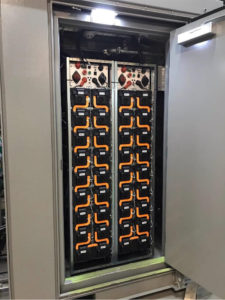Cadenza Innovation CEO in the “Megatrend” of Energy Transformation
New Project MediaWritten By Elana Knopp
States across the Northeast have been significantly ramping up incentives for distributed energy resources (DERs) like battery and thermal storage, intermittent generation, demand response, energy efficiency, and electric vehicles and their charging infrastructure.
In Maryland, a new grant program is funding community and campus microgrids, while New York State has established a value stack mechanism to compensate energy created by DERs like solar. In New Jersey, new market structures to embrace DERs are being explored as part of the state’s Clean Energy Master Plan, with directives to develop low-cost financing or loans for these resources.
The shift is a solid indicator of the critical role DERs will play over the coming decades, with U.S. capacity projected to reach 387 GW by 2025, according to a recent Wood Mackenzie report.
Solar, EV infrastructure and residential load management now lead all other resources, accounting for more than 90 percent of DER capacity installed between 2016-2025. And cumulative DER investments will be massive, expected to surpass USD 110.4bn by 2025, with solar, EV infrastructure, battery storage and grid-interactive water heaters driving that spending growth.
“There’s no question that last year made two types of winners when it comes to momentum,” Christina Lampe-Onnerud, Cadenza Innovation Founder and CEO, told NPM. “One is big companies with big footprints and large coffers of cash. They can afford to take it slow, they can make fewer decisions, and they will be fine. And then you have the innovators who are good at bootstrapping, at finding solutions, and don’t mind a 20-hour work day. There was nothing predictable about last year, and 2021 is going to be equally unpredictable. So who will make money is actually the real question. Who will make money will decide adoption and adoption rates, and the systems. We have to make sure that many players actually benefit, not only in a social and feel-good way, but frankly, bottom-line finance.”
Cadenza’s latest project is a prime example of multi-partner benefits. Last month, the Connecticut-based energy storage company unveiled a new battery storage project that uses an innovation in lithium-ion (Li-ion) battery technology, potentially enabling more integration of renewable energy resources onto the grid.
Located at the New York Power Authority (NYPA) office in White Plains and funded in part by the New York State Energy Research and Development Authority (NYSERDA), the battery technology was developed to showcase energy storage’s role in enhancing demand management and grid flexibility that will help advance New York State’s nation-leading climate and clean energy goals. Now in place following extensive development, testing and certification, the fully integrated battery storage unit will shave the Power Authority office’s peak electricity demand for up to five hours, delivering a high-performance energy storage solution at a significant savings.
“We are very clear on what the future holds and what that looks like,” Lampe-Onnerud said. “It will be distributed energy, it will be renewables, it will be sustainable, and batteries and software are critical in this paradigm. The new technologies in this case are more convenient, more resilient, and more distributed, meaning they are less prone to attacks. And with the recent attacks and the worries around software and how that works, even if you hack the software, the assets are distributed. So if you really want to get to us, you take us out through our electricity at one big power plant. But if you have little power plants in everybody’s home, you don’t take us out. We’re neighbors, we buy an energy storage system together, we all run off that battery. It changes the conversation.”
According to the North American Electric Reliability Corporation (NERC), which regularly assesses reliability and security of the grid, total capacity potential from residential load management, distributed solar, distributed storage, and EV charging will exceed the reliability requirement assessment by a whopping 352 GW by 2025.
“The megatrend for energy transformation has begun,” Christina Lampe-Onnerud. “So we will see much faster adoption of solar, wind, and renewables in general, and smaller, more distributed energy like small gas turbines and a lot of software implementation around energy efficiency. And batteries are a key element of the solution. We have now passed the familiarity stage and now it’s a matter of courage for deployment. It’s about the harmonization between the new and coming paradigm, because there’s no chance to go back to all fossil fuels. It will be interesting with the COVID crisis and the transition of these technical changes and the paradigm shift. It has moved from being very pragmatic to, ‘We will do this.’ The question is, what’s the smartest way to do this?”
FERC Order No. 2222 is seen as a harbinger of the critical role DERs will play in the energy sector. The rule enables these resources to participate alongside traditional resources in the regional organized wholesale markets through aggregations, opening U.S. organized wholesale markets to new sources of energy and grid services.
Distributed electricity will soon be able to aggregate within Regional Transmission Organizations and Independent System Operators in order to satisfy minimum size and performance requirements that each may not be able to meet individually.
The new rule is expected to provide a variety of benefits, including lower costs for consumers through enhanced competition, more grid flexibility and resilience, and more innovation within the electric power industry.
Regional grid operators are now working to revise their tariffs to establish DERs as a category of market participant.
“If you want to see the biggest possible stakeholder engagement, you have to put some benefit in everybody’s pocket,” said Lampe-Onnerud. “At a very basic level we need data, we need some incentives, and we need both will and speed.”
